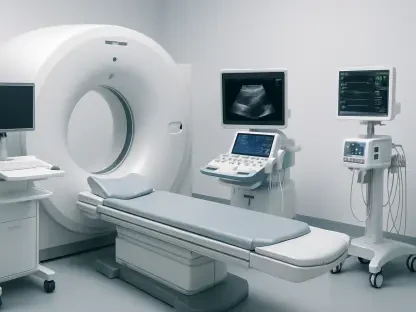In an era where technology seamlessly integrates into various aspects of life, the field of hospice care is witnessing a transformative shift propelled by technological innovations. The growing preference for home-based hospice services, influenced by an aging population and personal comfort, has catalyzed this change. Amidst this backdrop, the role of technology in hospice care is under scrutiny, balancing automation with the intrinsic humane elements of care. As technology evolves, so does its potential to enhance end-of-life care, crafting a future where human touch harmonizes with digital advancements.
The Imperative Rise of Home-Based Hospice Care
Aging Population and Comfort Preferences
The burgeoning demand for home-based hospice care is largely attributed to societal shifts toward personalization in healthcare. Baby Boomers, a substantial cohort entering late adulthood, exhibit a strong inclination to spend their final days in a familiar and comforting environment. This trend signifies a departure from institutionalized care, promoting a more intimate setting for hospice services. Homes, with their inherent sense of comfort and familiarity, offer an ideal canvas for delivering compassionate care without the sterile aspects of clinical settings. The preference for such environments aligns with broader healthcare trends prioritizing patient-centered approaches over impersonal traditional methodologies.
Moreover, this demand underscores the crucial need for hospice services to address emotional well-being alongside medical requirements. Patients and their families increasingly view home-based care as synonymous with maintaining dignity and autonomy during life’s twilight. As a result, caregivers are challenged to adapt strategies that emphasize empathy and personalized interventions. Within this context, technology emerges as both an enabler and a challenge. It supports caregivers with tools to enhance service delivery but must not overshadow the personal interactions that form the core of hospice care.
Technological Support in Home-Based Hospice
Technology’s role in home-based hospice care is multi-faceted, supplementing but not supplanting the personal touch that characterizes these services. Telehealth technologies exemplify advancements enhancing clinician-patient interactions by facilitating regular check-ins and assessments remotely. This approach is particularly beneficial for patients in remote or underserved areas where access to healthcare resources is limited. Through video consultations, healthcare professionals maintain vigilance over patient health, providing timely interventions and reducing unnecessary hospital visits.
Remote monitoring devices extend these capabilities, offering caregivers real-time insights into patients’ health statuses. By continuously tracking vital signs and other health indicators, caregivers can promptly respond to any deviations that might necessitate attention. This proactive approach ensures that patients receive care tailored to their evolving needs, enhancing safety and peace of mind. While technology enhances logistical efficiency, the challenge lies in integrating these tools without diminishing the rapport established through in-person interactions. Thoughtful implementation ensures technology acts as a bridge, not a barrier, maintaining the essence of personalized care.
Striking a Balance Between Technology and Human Touch
Ensuring Empathy Amidst Automation
One of the critical considerations in integrating technology into hospice care is preserving the empathy integral to patient interactions. While automated systems streamline processes, it is the emotional connections formed between caregivers and patients that define hospice care quality. The deployment of AI-driven tools to assist in logistical tasks like scheduling or medication management must be carefully managed to prevent a shift toward depersonalized care. It is vital that caregivers remain present, offering comfort and understanding beyond what algorithms can provide.
The emotional nuances that caregivers bring in face-to-face interactions cannot be replicated by machines. Their presence conveys compassion, understanding, and reassurance that technology currently cannot mimic. This emotional support is particularly crucial in hospice settings, where patients and their families navigate profound emotional and existential transitions. Thus, the integration of technology must prioritize enhancing caregivers’ capacity to deliver empathetic and personalized care. Training programs emphasizing emotional intelligence alongside technical proficiency can equip caregivers to maintain this balance effectively.
Overcoming Technological Challenges
Despite technology’s potential benefits in hospice care, challenges persist that must be addressed to ensure effective integration. Technical issues, such as unreliable connectivity or poor-quality audio-visual platforms, can impede the efficacy of digital interactions. These hurdles can lead to frustration and reduce the quality of care provided, potentially eroding the trust between patients and caregivers. Moreover, a heavy reliance on technology risks creating a clinical environment devoid of personal warmth, contradicting the very essence of hospice care.
Addressing these challenges requires a concerted effort to improve technological infrastructure and develop user-friendly systems. Ensuring ubiquitous access to high-speed internet and investing in robust telehealth platforms are essential steps. Additionally, involving caregivers and patients in designing these systems can foster solutions that address real-world needs and preferences. Through ongoing dialogue and feedback loops, stakeholders can refine technological implementations, ensuring that they support rather than supplant compassionate caregiving.
Technology’s Role in Supporting Caregivers
Alleviating Caregiver Burden
For caregivers, both professional and familial, technology offers critical support by alleviating burdens inherent in hospice care. Virtual respite care is one innovation that allows caregivers to momentarily step away, confident that patients remain monitored and safe. This respite is essential for maintaining caregivers’ mental and emotional well-being, preventing burnout, and ensuring they can provide sustained, compassionate care. Recognizing caregivers’ challenges is pivotal, underscoring the value of technology in fostering a supportive care environment.
Moreover, technological tools can facilitate collaboration among care teams, enhancing communication and coordination. Digital platforms enable seamless information sharing and collaborative decision-making, ensuring that care plans are consistently aligned with patient needs and preferences. These enhancements ultimately create a more cohesive care experience, reinforcing caregivers’ ability to address the complex and dynamic requirements of hospice settings. By integrating supportive technology solutions, caregivers find themselves better equipped to focus on empathetic engagements that define quality hospice care.
Building Community and Connection
Beyond logistical support, technology fosters a sense of community and connection among caregivers and families. Online support groups provide caregivers a platform to share experiences, advice, and empathy, cultivating a network of mutual support. These communities offer a refuge for sharing the emotional complexities of caregiving, reinforcing caregivers’ resilience and capacity to continue their vital work. By facilitating these connections, technology plays an instrumental role in enhancing caregivers’ well-being and effectiveness.
Furthermore, virtual communities extend beyond caregivers to family members, providing emotional support during challenging times. Through online forums and social media, families can connect with others navigating similar end-of-life journeys, sharing insights and companionship. These digital connections build a network of shared experience and solidarity, reinforcing the emotional and social fabric surrounding hospice care. By leveraging technology to create spaces for connection and support, hospice care can extend its compassion to encompass entire care networks, strengthening the bonds essential to end-of-life care.
Ethical Considerations and Technological Integration
Balancing Ethical Concerns and Innovation
As technology continues to reshape hospice care, ethical considerations emerge that warrant careful deliberation. Central to these concerns is the risk of technology overshadowing the deeply personal aspect of hospice services. An over-reliance on digital interventions may create an atmosphere of detachment, where efficiency is prioritized over empathy. As caregivers navigate this evolving landscape, ethical frameworks are crucial for mitigating these risks and ensuring technology acts as an ally, not an adversary.
Establishing guidelines that emphasize patient autonomy and consent is integral to ethical technology use in hospice care. Transparent communication with patients and families regarding the scope and limitations of technological tools helps maintain trust and agency. Additionally, caregivers must remain attentive to patients’ emotional and psychological needs, ensuring that technology enhances rather than detracts from the quality of care. A balanced approach that integrates ethical considerations reinforces the patient-centered ethos at the heart of hospice care, guiding technology’s role in this sensitive domain.
Future Directions and Considerations
The path forward for technology in hospice care involves continuous innovation balanced with a steadfast commitment to human dignity. Future technological developments must incorporate inclusive design principles, accommodating diverse abilities and preferences. As the landscape evolves, investments in research and development can foster advances that address current limitations, such as enhancing the usability and accessibility of telehealth systems. These efforts can bridge the gap between digital and human elements, ensuring technology serves as a tool for enhancing, not overshadowing, compassionate care.
In contemplating the future, the hospice industry must prioritize integrating empathy with technological progress. Ongoing education and training for caregivers can facilitate this integration, equipping them to effectively leverage technology while preserving their essential role as emotional pillars. Moreover, engaging patients and families in the dialogue about technological adoption ensures that solutions remain attuned to their needs and preferences. By centering discussions on empathy, inclusivity, and innovation, the hospice care sector can pioneer a future where technology and compassion coalesce to provide holistic support in end-of-life care.
Crafting a Compassionate Technological Evolved Future
In our modern era, technology is seamlessly woven into the fabric of everyday life, and its influence is reshaping the landscape of hospice care. Technological innovations are driving a transformative shift, particularly in the realm of home-based hospice services. This shift is largely fueled by the growing preference for care at home, spurred by both an aging population and the comfort of familiar surroundings. Within this context, technology in hospice care faces scrutiny as it balances the elements of automation with the essential humane aspects of caregiving. As technological capabilities advance, so does the opportunity to enrich end-of-life care, paving the way for a future where human compassion seamlessly melds with digital progress. The aim is to offer a caregiving atmosphere that supports both emotional connection and practical efficiency, fostering an environment that resonates with dignity, comfort, and respect for individuals and their families at the end of life.









